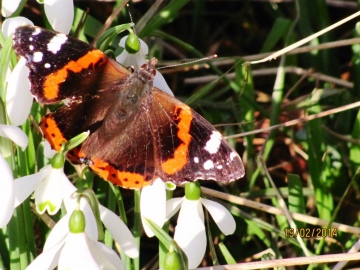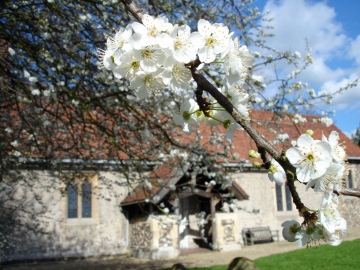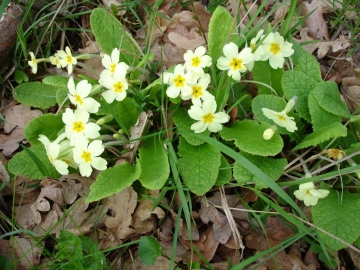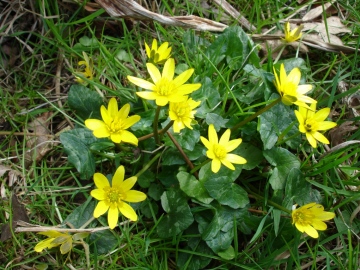
February 19th. A grey morning when I set out to walk to Mill Green Common but a sunny one by the time I arrived half an hour later. Had intended to collect some bryophytes but decided to sit in the sun for ten minutes before starting. Two hours later............... Is there anything more luxurious in life than the first gentle warmth of spring and blessed be to early retirement that I now have the time to wallow in it. The sunshine raised hopes that the first butterfly or two of spring might emerge and these were soon rewarded with a Peacock, sunning itself on a pile of Purple Moor Grass tussocks near where Rob and I had been working. Less expected were two Red Admirals, including this one, which flushed from the bracken and began nectaring at nearby Galanthus flowers. The wing tips were a little faded but otherwise both butterflies were in good condition. There have been some strong southerly winds during recent bouts of stormy weather but the chances are that these two had overwintered. Last year - which was admittedly a very poor one for this species – I did not see my first Red Admiral until August (and only two more thereafter) so to see a couple in mid-February was a delight.
Of course, the spring can still go belly up but it’s a promising start. These Cherry Plum were photographed in Margaretting Churchyard : last year the first blooms did not appear until late March while the Blackthorn did not peak until the first week of May. Three months of wet has got to be better than the three months of unrelenting north-easterlies which we experienced last winter, but then I don’t live on the banks of a river.
Primroses and Lesser Celandine are also in flower locally and Rob has seen Coltsfoot on the banks of the M25.
The warmth today also brought forth my first Bumblebee of the spring, the White-tailed Bombus lucorum. Managed to catch one of them as it was suffering from a winter long hangover but it flew off very strongly when released. Sadly, according to the Breakfast News two diseases found in Honey Bees – Deformed Wing Virus and Nosema ceranae – the latter a tiny parasite that was first identified in Asiatic Honey Bees - have now been found in bumblebees as well. Another unwanted import! Stress I reckon; that’s a major player in the recent bee decline. Believe me, you’d be stressed by mid-summer if you were a bee living in this area and your life depended on finding enough pollen and nectar to feed your offspring. Garden and roadside verges would be your best hope; there is precious little else in the wider countryside. Thank goodness for brownfield sites.




















